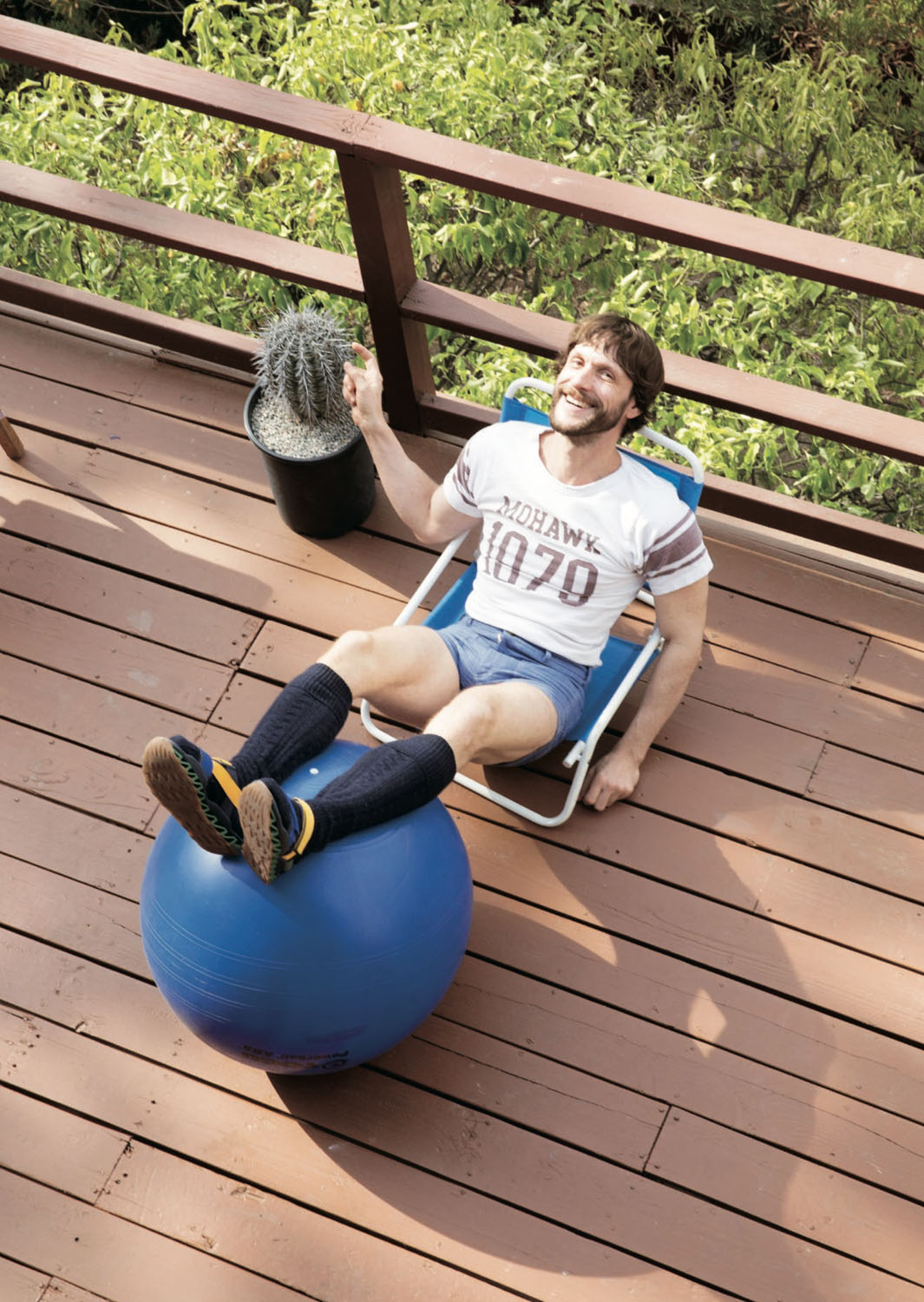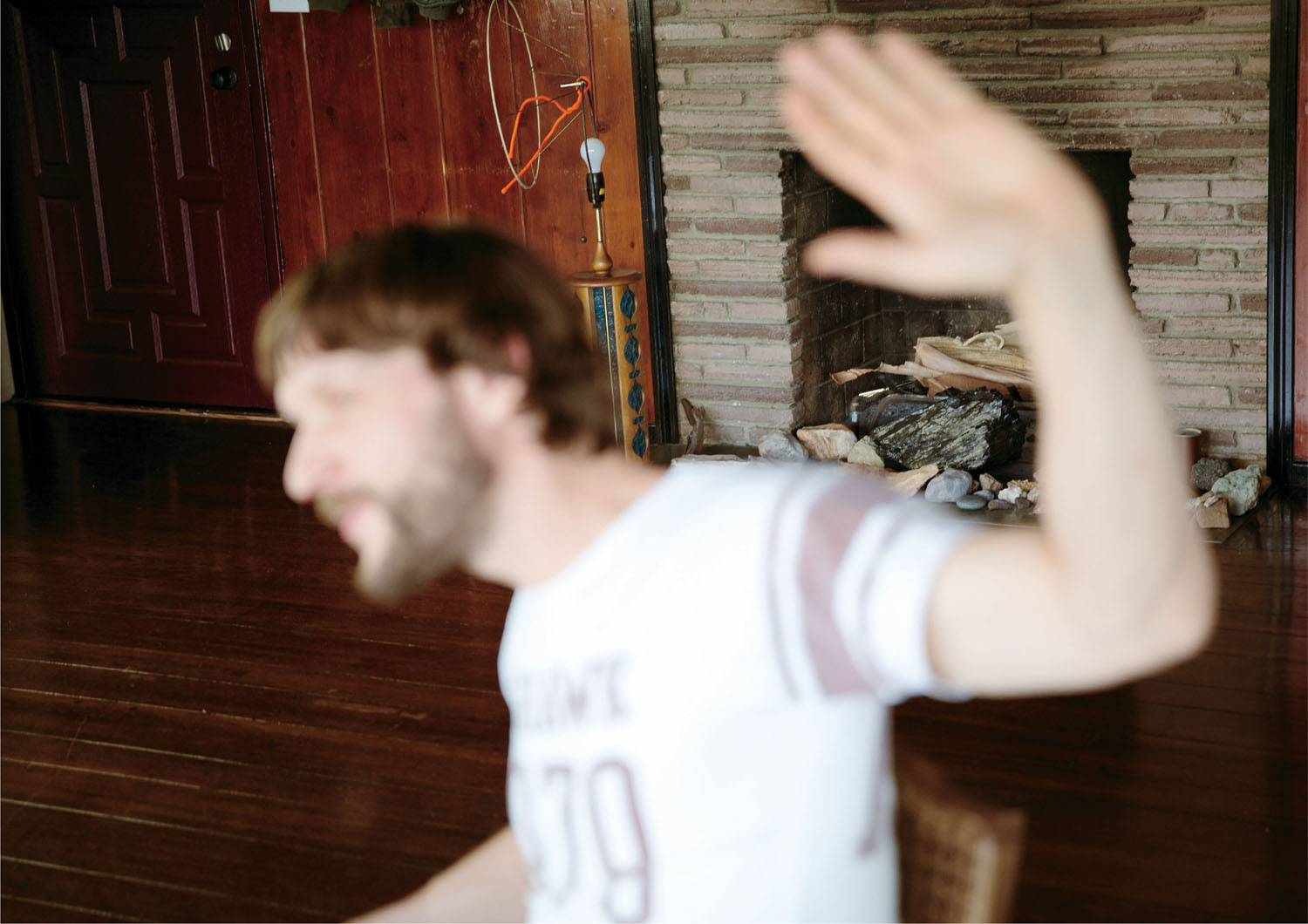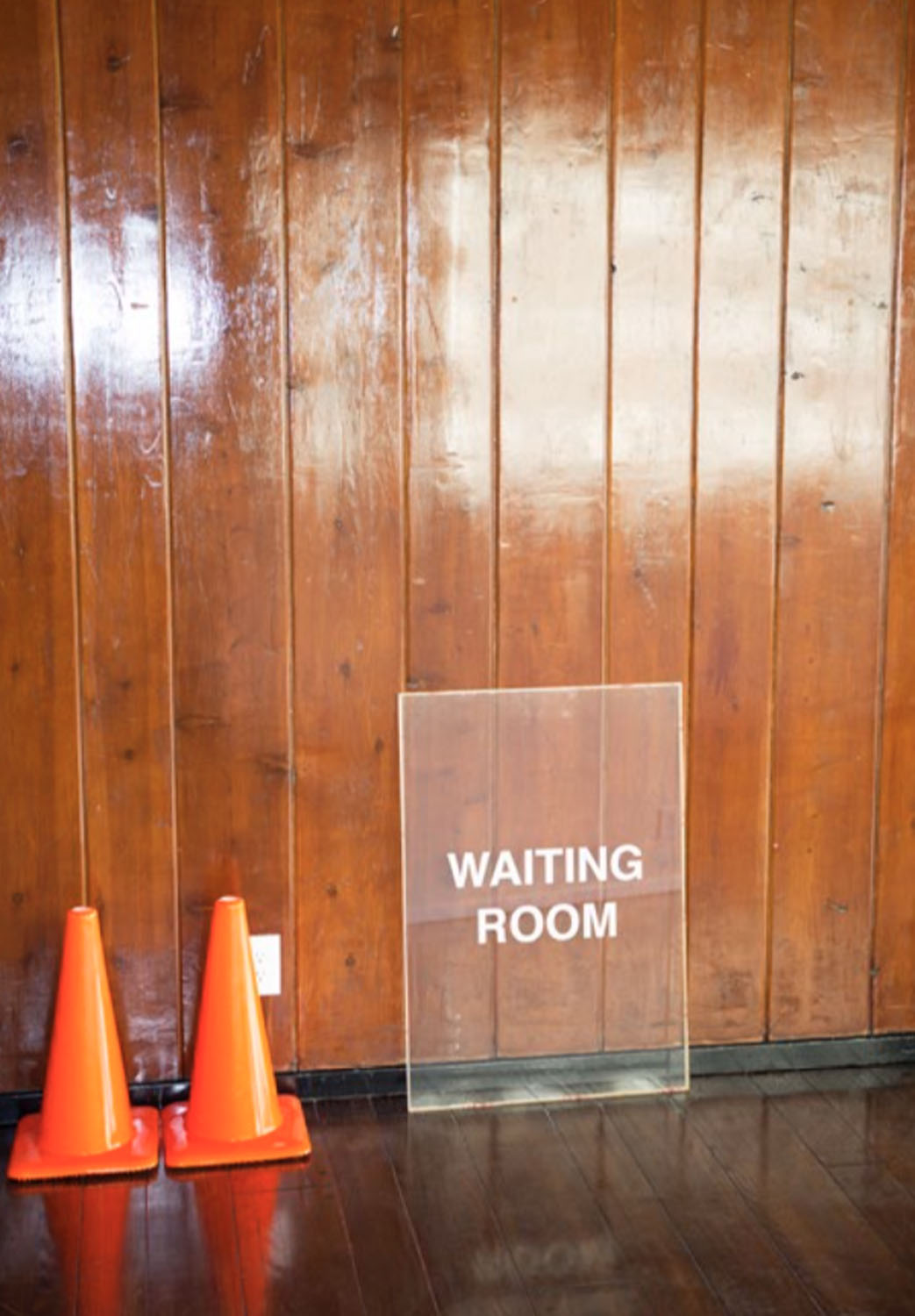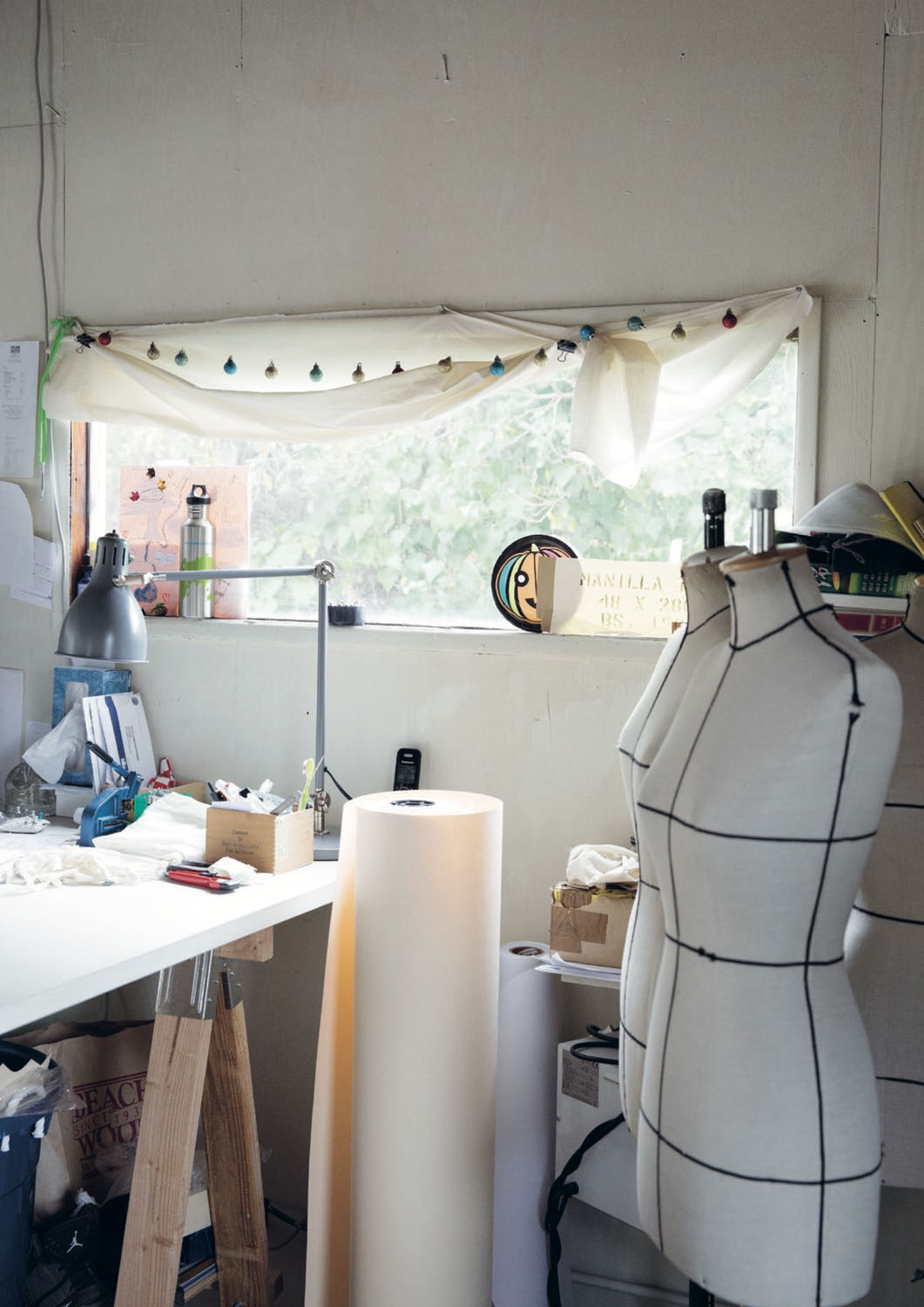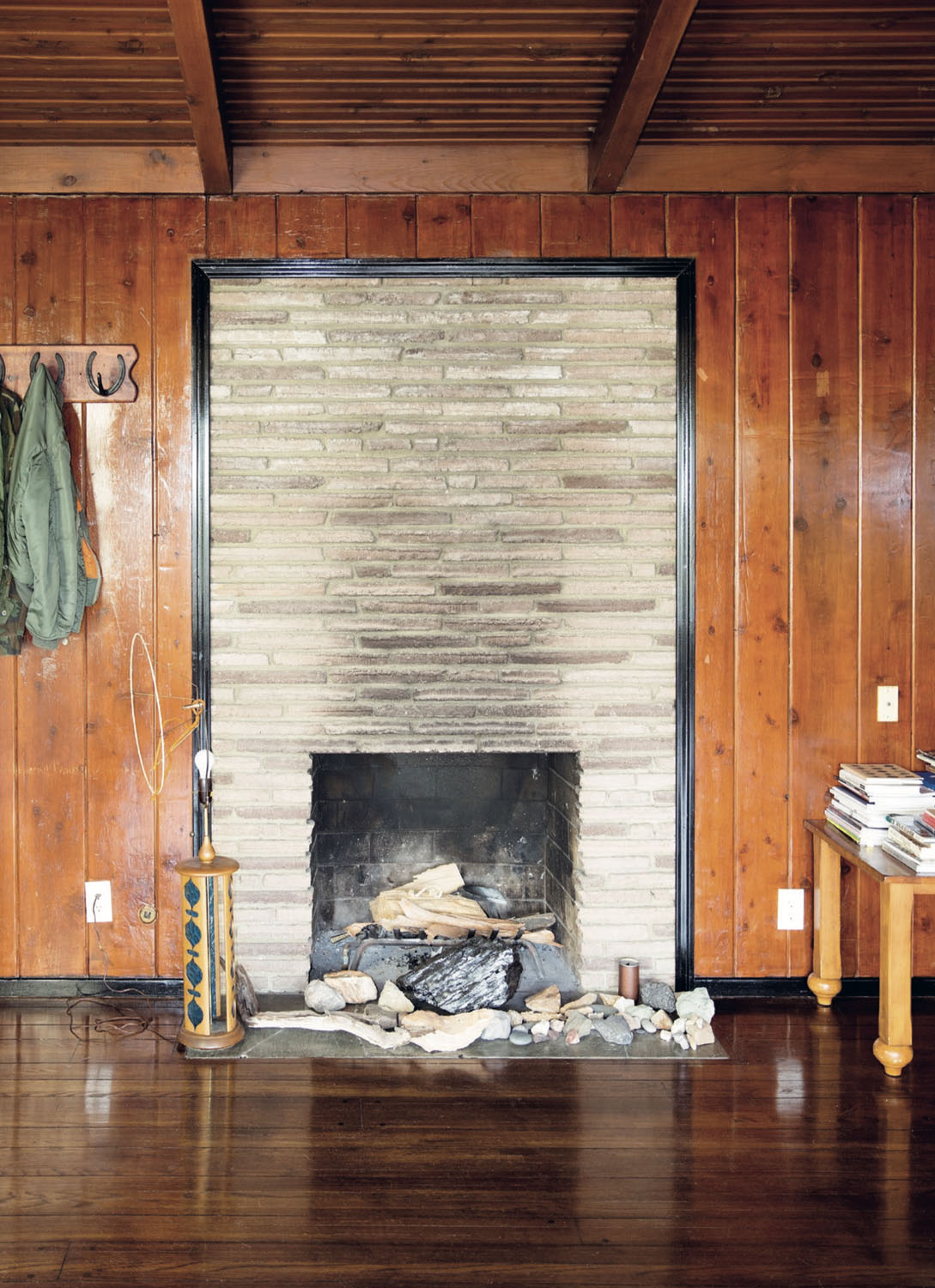BERNHARD WILLHELM
Interview by Michael Bullock
Photography by Daniel Trese
Apartamento 13, 2014
In a luxury-obsessed market place where almost every fashion house strives to make its customer look and feel wealthy, Bernhard Willhelm has always taken the opposite approach. Willhelm is a champion of nonconformity who cares more about decadence, fun, and continuous exploration than conventional signifiers of status and style. Since starting his eponymous label in 1999, Bernhard Willhelm, together with his business partner Jutta Kraus, have carved out a unique place for themselves by shunning trends and fearlessly approaching the world of fashion on their own terms. So it makes sense that, after twelve years of living in Paris, Willhelm recently made a leap of faith and traded the grey skies of the fashion industry’s capital for the dreamy relaxed paradise of the Hollywood Hills. It’s exciting to catch Bernhard in this moment as he swaps one world for another, and starts afresh with the space to re-define, re-inspire and re-invent himself, his life, and his business. In person Bernhard Wilhelm is very much like his clothes: colourful, flirtatious, and overflowing with ideas. As he gives me a tour of his home, his delight with his new surroundings is contagious. With an enormous smile on his face he brags about the lack of decor. In the living room, instead of a couch, there is a Lanier LD 328c industrial colour copy machine. ‘The ultimate luxury,’ Bernhard explains.
I didn’t realise that you have only lived in LA for three months.
After twelve years in Paris I had my little crisis and I had to escape. You always think that if you want to do fashion you should be in Paris and do shows and function like all the others. I think it’s false, so I made new decisions about how I want to exist.
And your whole team came with you?
I work here with only four people, it’s a very small company. It’s my business partner, Jutta Kraus, and me together, and we have another Jutta for pattern making... So we have two. And there’s a guy from Israel, Yonatan, who does the Camper shoes and graphics. And Sarah, let’s call her the girl for everything: organizing and emails and telephone.
Did you have to convince them?
We did it before. Two years ago we set up temporarily in Mexico. Now we’ve done the same but a bit more serious. I’m very faithful to my people. They came with me here because they believe in what they are doing. We are also living together. It’s a way of creating our own family. It’s a special experience because you see kids growing up, you see us getting older, how we think about the world changing. It’s good to have a little community where you feel comfortable, you feel protected. (Bernhard leads me to the garage, which he has turned into his studio, and opens the garage doors.) This is my open-air atelier.
(Laughter)
Here is where the magic is happening. For desks we just got some doors, and we put them on sawhorses. It’s far from being glamorous but it’s very improvised which I like.
The view is glamorous.
Yeah, I do it for the view. I love the mountains. So that’s the second floor.
Who lived here before?
Apparently a pop star but they wouldn’t tell me who. A porn star would have been better. This is my bedroom. It has the best view. It’s good to make love here.
What did you write on the headboard?
Especially since this an Ikea bed, you need to put a little message on it. It says, ‘Bernhard, your mother is proud of you, Bernhard, your father is proud of you.’
Is it true?
They should be a little bit proud I think.
Of course. Do they wear your clothes?
My mother does, a little bit. She’s 75. And my dad, a few accessories. (Someone walks by us in the hallway and Bernhard introduces me to him.) This is Carsten [Fock], he’s an artist from Berlin. He does all our typography and everything, which has to do with handwriting. My handwriting is actually his handwriting. He wrote that thing on the bed. He is my alter ego font for everything.
How did that start?
I just like his handwriting better. This is the children’s room... This is the very interesting washing room. It’s good that there is nothing, but you have to know that in Paris I bought a place that I made into the most beautiful, creative place. It told everything about Bernhard Willhem. But I realised that I didn’t want to get old there. It’s a good project but you have to go on to the next thing.
Your fantasy became a prison?
Sometimes you have to destroy things you create otherwise you’re stuck. Here is just the opposite. I don’t touch it. You have the light and beautiful surroundings, and you have fuel. You’re here in California. Moby is living on top of the street. He has a little castle. He’s the Cinderella of this area.
We have one light blue bathroom and one pink. Maybe that would be good next to each other because it’s the girls and the boys.
What happened to your arm?
Before I left Paris I had an operation. They had to take out a tumour here (Bernhard points to the scar on his arm). So everything was delayed when I arrived here. In September we didn’t have anywhere to live, we just got this house on Craigslist. It was the second house we looked at. We didn’t make any effort... nobody had touched it since the ‘70s.
Do you miss Paris?
I went back to Paris last week, it’s winter, it’s cold, everyone’s super stressed and the city is packed: I don’t miss it for a moment. California, what’s good about it is the climate. Look, there’s a hummingbird... Here you have good grass, hummingbirds and eagles.
What are these lights?
We just installed them because we didn’t have a better idea. It’s like the only thing we restored. On the top floor we did three rows. It’s for fittings.
So you haven’t designed a collection from here yet?
No but the lookbook for the last collection was shot here.
The one with older models?
No, that was shot at a rich friend’s place in Beverly Hills. That’s the cliché of LA, the instant version.
How did you find the models?
There are agencies for everything and they also need older people for advertising. The thought behind it was that LA is all about being young, so let’s shoot old people. It seems appealing to get old here. It was also about having a bit of positive energy because all of fashion is fascinated with teenagers. It’s obvious to dress young, beautiful people but we wanted to give older people an image that is positive, fresh and new. That’s why we did that, to show that it’s OK to get old and wise.
You’re obviously inspired by new things here.
I was always fascinated by America. Tommy Hilfiger is one of my favourite designers. Putting the American flag on clothing and making a fashion with it. This is a very American way of thinking and doing business. American fashion has always been more about the mass market. That’s also an idea for the future. We have created a niche and our own little community in order to survive, but maybe America could help us think about how to put it out into the world in a different way.
So it’s going to be all about BW logo t-shirts from now on?
It’s more about making clever products and designing things you can carry for a longer period of time. For every collection we have done we have made so many different and very complicated patterns. And now to think about... Let’s call it products – it’s a new way of thinking.
Will you continue to show in Paris?
I realise that most people experience our work through the website. Fashion shows cost you around 50,000 to 70,000 euros. This time I invested that money in moving here. I usually spend all the money I’ve earned on fashion shows, and now at 41, I want to spend the money how I want to spend it. I want the people who like what I do to see it.
So you would rather have an event in LA that is more directly for customers and then put that online?
It would be a much cheaper way and more people that care about it would see it. It’s also a way of dealing with circumstances of course. I don’t have to satisfy fashion people. I have to satisfy our people but it took me 15 years to find that out.
At least you found out.
You have to learn from your mistakes and turn negative things in your life, when you put them in a different light, into something positive.
Was Jeremy Scott pissed that you came to town, like, ‘LA is my town’?
Jeremy and I have a good relationship. Maybe he had the same thing happen to him in Paris. He got fucked over by a production company and he was also fed up so he decided to move to LA because he’s fascinated by American culture... So am I, but in a very different way. He wants to dress celebrities, I’d rather dress somebody else.
I mention him because the way you have functioned in fashion (on your own terms) is similar. So it’s interesting that you’re both here. Could LA become a capital for fashion independence?
We both figured out how to survive and we had to fight for it. It wasn’t so easy. He made creative choices compared to other people; it’s one of the first decisions you have to make as a fashion designer. Do you want to be corporate or do you want to be free? It’s very hard to be free, you will have to work more, you will make less money or no money. You will have to suffer, but you will have your freedom. Do you choose the obvious or the not so obvious? I guess I’m the not so obvious.
I think you’re a hero for the not so obvious.
Maybe. But is Hollywood obvious? It also seems that now the only way to function in Paris is to work with one of those big groups.
I’m curious about your experience with another publication. You were the first cover star of BUTT magazine. Did you know what a big deal it would become?
I thought it was just a little project. It’s a real phenomenon, that magazine. At the time it just seemed so dated to be gay. There was a real need for alternative gay culture. BUTT expressed a certain kind of different beauty, which had nothing to do with the perfect body and the perfect face. Now I consider it a very positive ex- perience but when it came out everyone was shocked. I’m not really a good friend of the clas- sic fashion press and that BUTT image had a little bit to do with how I was perceived in fashion. You were not supposed to be naked in a magazine. You were not supposed to be open about your sexuality. And as a gay person you were not supposed to say, ‘I like it up my ass.’ BUTT magazine changed this perception. So I was their first cover boy and I don’t mind that now.
Those pictures of you launched a small revolution in gay culture.
You know some things in life you can plan and you can work for and other things just happen and you need some time to think about those things. That all happened for the BUTT editors and for me, in a very surprising way.
Your Cocaine collection was also a surprise. I absolutely loved it. It was radical to use a famous porn actor (François Sagat) as your muse and model and bring him into fashion. And then the collection endorses decadence and unapologetically celebrates fetish. You really went for it.
I’m a bit of an exhibitionist, I just never had a problem with porn. I mean everybody ‘looks porn’ right now but no one wants to admit it. It’s absolutely OK to ‘look porn’. Sometimes it’s good to see people having creative sex or at least showing us what is possible.
Why did you pick François Sagat?
He is the one person in Paris who started with fashion as a stylist’s assistant and then decided to change his body and do porn. I was fascinated with him because he created his own image, which is very rare in France. There, people are born into their position. You are from a family and you go to ‘that college’ and your whole life seems to be planned before you even develop a personality. He broke from all that and created a very powerful gay image. It’s hard to take a bad image of François because he’s just so photogenic. And just to dress him, and to do a collection with one character, let’s call it a muse, it was him. He got very good treatment also. I helped him become a fashion icon. He did porn for a long time and last year he acted in a normal film. That means crossing from porn to a normal film career could be possible.
I hope it keeps going and he ends up becoming a spokesperson for Coca Cola. It’s interesting to think of him in terms of LA. That might be the major difference between here and Paris. LA is the world capital of self-invention.
That’s the thing about America, it doesn’t matter where you come from, or from what social background, what you can be here is who you want to be. You invent it. It’s possible. Arnold Schwarzenegger is a very good example of that. Someone who came here and started bodybuilding, being the best looking guy in California, and then becoming the best-paid movie actor, and then the governor. It’s all possible, you know? There’s no limit here.
Maybe someday you’ll be governor.
Why not?
